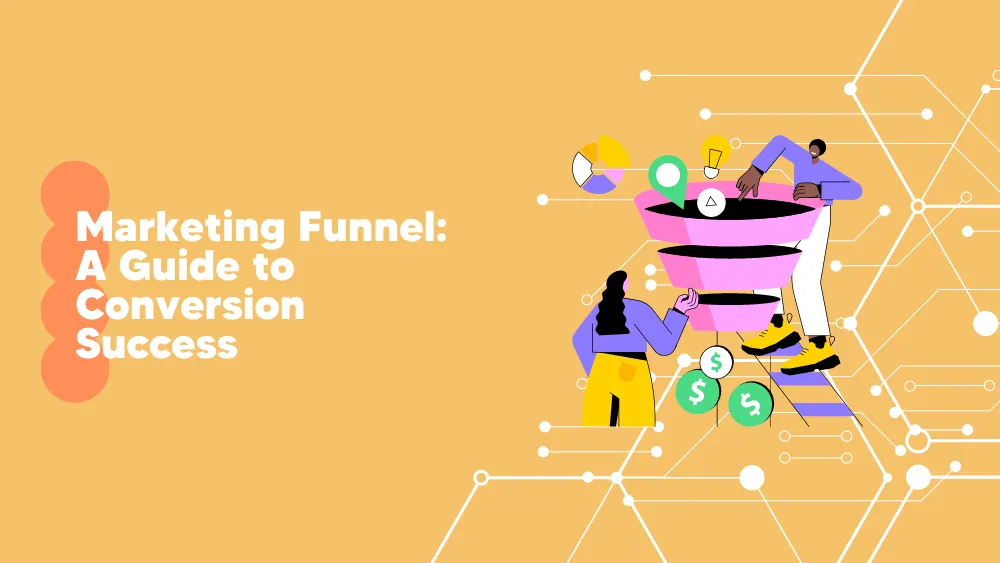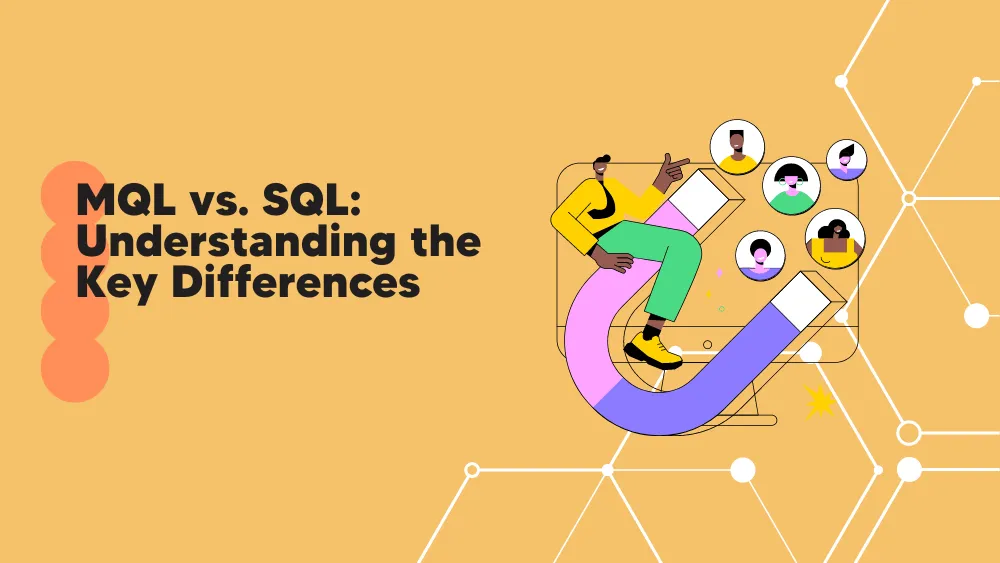One of the main obvious rules in any marketplace is that without customers no business can really survive. Therefore, acquiring new customers is essential in terms of growth and profitability.
Let’s see what customer acquisition is, more specifically and what the necessary steps are to make it work perfectly in today’s marketplace.
Define Your Target Audience
Defining your target audience is very really first step in creating an effective customer acquisition strategy. Your target audience is the group of people who are most likely to be interested in your product or service. Understanding your target audience allows you to tailor your marketing efforts and messages to appeal to their specific needs, preferences, and behaviors.
To define your target audience, you need to conduct an extensive market research and gather information about your ideal customers. This may include demographics, psychographics, and behavior patterns. Demographics refer to characteristics such as age, gender, income, education level, and location.
Psychographics refer to personality traits, values, attitudes, and interests. Behavior patterns refer to how customers behave and interact with your product or service. Creating customer personas can help you better understand your target audience.
What is a customer persona?
Once you have defined your target audience, you can use this information to create targeted marketing messages and tactics that will resonate with your ideal customers. By understanding their needs and preferences, you can create content and advertising that speaks directly to them, making it more likely that they will engage with your brand and become a paying and recurring customer.
Types of Customer Acquisition Strategies
What are the best strategies for customer acquisition? Well, first of all, there are several types of customer acquisition strategies that businesses can use to attract and convert new customers. Each strategy has its own unique advantages and requires different tactics to implement effectively. In this section, we will discuss some of the most popular customer acquisition strategies and provide examples of businesses that have successfully used and implemented them.
Inbound Marketing
Inbound marketing is a strategy that involves creating content and experiences that attract potential customers to your brand. This can include blog posts, social media updates, e-books, and webinars. The goal is to provide valuable information that addresses your customers’ pain points and positions your brand as a thought leader in your industry. Examples of companies that have successfully used inbound marketing include Hubspot and Moz (we will see this later in the real-world case studies section).
Content Marketing
Content marketing is a type of inbound marketing that focuses on creating and sharing valuable content to attract and retain customers. This can include blog posts, videos, podcasts, and social media updates. The goal is to provide information that is useful and relevant to your target audience and to build trust and credibility with your customers.
Paid Advertising
As self-explanatory as it sounds, paid advertising refers to paying for exposure on platforms such as Google, Facebook, and Instagram. This can include search ads, display ads, and social media ads. The goal is to target potential customers based on their demographics, interests, and behaviors and to drive traffic to your website or landing page.
Referral Marketing
Referral marketing involves encouraging your existing customers to refer their friends and family to your business. This can include referral programs, loyalty programs, and incentives for customers who refer new business. The goal is to leverage your existing customers’ networks to attract new customers and to build trust and credibility with new customers who are referred by someone they know. Examples of companies that have successfully used referral marketing include Dropbox and Uber.
Influencer Marketing
Influencer marketing is about partnering with influencers in your industry or niche to promote your brand. This can include social media influencers, bloggers, and YouTubers. The goal is to leverage the influencer’s reach and credibility to attract new customers and to position your brand as an authority in your industry.
In summary, there are several types of customer acquisition strategies that businesses can implement to attract and convert new customers. Inbound marketing, content marketing, paid advertising, referral marketing, and influencer marketing are just a few examples of effective customer acquisition strategies that businesses can use to grow their customer base and increase revenue.
The key, here, is to choose the strategy that best fits your business and to execute it effectively using a combination of tactics that resonate with your target audience.
Optimize Your Website for Customer Acquisition
This is a step that sometimes can be undervalued or not taken in strong consideration but it’s as well very important for the ultimate goal of customer acquisition growth. Optimizing your website for customer acquisition, in fact, is essential for businesses looking to attract and convert new customers online.
There are several ways to optimize your website for customer acquisition, including using effective calls-to-action (CTAs), creating landing pages, and providing lead magnets.
Here are the tactics and some tips for optimizing your website for search engines.
-
Effective CTAs
Calls-to-action are fundamental elements of your website that encourage visitors to take action, such as signing up for your newsletter, downloading an e-book, or making a direct purchase. To optimize your CTAs for customer acquisition, make sure they are clear, visually appealing, and placed in strategic locations throughout your website. Use action-oriented language that creates a sense of urgency and incentivizes visitors to take action immediately.
-
Landing Pages
Landing pages are web pages that are specifically designed to convert visitors into leads or customers. They are typically used in conjunction with advertising campaigns and contain a form or other means of capturing visitor information. To optimize your landing pages for customer acquisition, make sure they are focused on a single conversion goal, have a clear value proposition, and are visually appealing and easy to navigate.
-
Lead Magnets
Lead magnets are valuable resources that you offer to visitors in exchange for their contact information. This can include e-books, whitepapers, webinars, or other resources that address your customers’ pain points. To optimize your lead magnets for customer acquisition, make sure they are relevant, valuable, and easy to access. Use landing pages to promote your lead magnets and capture visitor information.
-
Search Engine Optimization
Search engine optimization (SEO) is the process of optimizing your website for search engines to improve your visibility and attract more traffic. To optimize your website for customer acquisition, make sure your website is optimized for keywords that are relevant to your target audience. Use meta tags and descriptions to help search engines understand what your website is about and make sure your website is mobile-friendly and loads quickly.
By using effective calls-to-action, creating landing pages, providing lead magnets, and optimizing your website for search engines, you can improve your visibility, attract more traffic, and convert more leads into customers. The key is to understand your target audience and to create a website that is tailored to their needs and preferences.
Measure Customer Acquisition Metrics
After all these efforts, it’s time to analyze and measure. Measuring customer acquisition metrics, in fact, is a crucial aspect for businesses looking to improve their customer acquisition strategies and achieve growth.
Here, we are going to show the importance of measuring key customer acquisition metrics, such as conversion rates, customer acquisition cost (CAC), and customer lifetime value (CLV) (the most relevant ones) and we will provide tips for improving each metric and measuring success.
-
Conversion Rates
Conversion rates refer to the percentage of visitors who take a desired action on your website, such as making a purchase, filling out a form, or subscribing to your newsletter. Measuring your conversion rates is essential for understanding how effective your customer acquisition strategies are and for identifying areas for improvement. To improve your conversion rates, consider using A/B testing to test different landing pages, CTAs, and other elements of your website to see what works best.
-
Customer Acquisition Cost (CAC)
Customer acquisition cost refers to the amount of money you spend to acquire a new customer. Measuring your CAC is essential for understanding how much you can afford to spend on customer acquisition and for identifying opportunities to reduce your costs. To improve your CAC, consider using targeted advertising, optimizing your website for search engines, and improving your lead generation strategies.
-
Customer Lifetime Value (CLV)
Customer lifetime value refers to the total amount of money a customer is expected to spend on your products or services over their lifetime. Measuring your CLV is essential for understanding the long-term value of your customers and for identifying opportunities to improve retention and increase revenue. To improve your CLV, consider focusing on customer satisfaction and retention strategies, such as personalized marketing, loyalty programs, and customer support.
-
Return on Investment (ROI)
Return on Investment refers to the amount of revenue generated by a specific customer acquisition campaign or strategy compared to the amount invested in that campaign or strategy. This metric can help businesses understand which campaigns or strategies are most effective and identify opportunities to optimize their investments.
-
Customer Churn Rate
Customer Churn Rate is the percentage of customers who stop using a product or service over a given period of time. This metric can help businesses understand how effective their retention strategies are and identify opportunities to improve customer satisfaction and loyalty.
-
Lead-to-Customer Conversion Rate
Lead-to-Customer Conversion Rate refers to the percentage of leads that convert into paying customers. This metric can help businesses understand the effectiveness of their lead generation and nurturing strategies and identify opportunities to improve their sales funnel.
-
Time to Conversion
Time to Conversion means the amount of time it takes for a lead to convert into a paying customer. This metric can help businesses identify bottlenecks in their sales funnel and optimize their lead nurturing strategies to improve conversion rates.
By tracking these metrics alongside conversion rates, CAC, and CLV, businesses can gain a more comprehensive understanding of their customer acquisition strategies and identify opportunities for improvement.
Real-World Case Studies of Customer Acquisition
An easy and effective way to provide valuable insights into how businesses have successfully implemented customer acquisition strategies to drive growth and achieve results is through the use of real-world case studies. Here are a few examples of companies and their customer acquisition strategies.
Dropbox
Dropbox is a cloud-based file-sharing and storage company that has grown to over 600 million registered users since its launch in 2007. One of the key strategies that helped Dropbox acquire new customers was its referral program. The company incentivized users to invite friends to join Dropbox by offering them free additional storage space. The program was a huge success, and by 2010, Dropbox was adding 2.8 million users per month.
Key lesson: referral marketing can be a powerful customer acquisition strategy, particularly when incentives are aligned with user behavior.
Airbnb
Airbnb is a famous online marketplace that connects travelers with homeowners who rent out their homes or apartments. One of the ways that Airbnb acquired new customers was through its content marketing strategy. The company created a blog that provided travel tips and highlighted unique destinations. By providing valuable content to its audience, Airbnb was able to establish itself as a trusted authority in the travel industry and attract new users to its platform.
Key lesson: content marketing can be an effective way to attract new customers by providing value and establishing trust with your audience.
Dollar Shave Club
Dollar Shave Club is a subscription-based razor company that was acquired by Unilever for $1 billion in 2016. One of the ways that Dollar Shave Club acquired new customers was through its humorous marketing campaigns. The company created a viral video that poked fun at the traditional razor industry and offered a more affordable and convenient solution. The video generated millions of views and helped the company attract over 12,000 new customers in the first 48 hours.
Key lesson: humor and creativity can be powerful tools for standing out in a crowded market and attracting new customers.
Warby Parker
Warby Parker is an eyewear company that offers affordable, stylish glasses and sunglasses. One of the ways that Warby Parker acquired new customers was through its targeted Facebook ads. The company created ads that targeted people who had recently received a prescription for glasses or who were interested in fashion and design. By targeting its ads to a specific audience, Warby Parker was able to acquire new customers at a lower cost and achieve a high return on investment.
Key lesson: targeted advertising can be an effective way to acquire new customers at a lower cost and achieve a higher return on investment.
These real-world examples demonstrate how businesses can use a variety of customer acquisition strategies to drive growth and achieve results. By understanding the key lessons from these case studies, businesses can identify opportunities to optimize their own customer acquisition strategies and achieve success.
Conclusion
In conclusion, customer acquisition is a critical component of business growth, as it involves attracting and converting new customers to drive revenue and gain a competitive edge.
As seen in this article, effective customer acquisition strategies can take many forms, including inbound marketing, content marketing, paid advertising, referral marketing, and website optimization.
Measuring customer acquisition metrics, such as conversion rates, customer acquisition cost, and customer lifetime value, is also essential for evaluating the success of your customer acquisition strategy and identifying opportunities for improvement. By studying real-world case studies, businesses can gain valuable insights into how to implement effective customer acquisition strategies and achieve success.
So, whether it’s through referral programs, content marketing, humor, targeted advertising, or other tactics, businesses that prioritize customer acquisition and continuously refine their strategies are more likely to achieve sustained growth and continuous success.





